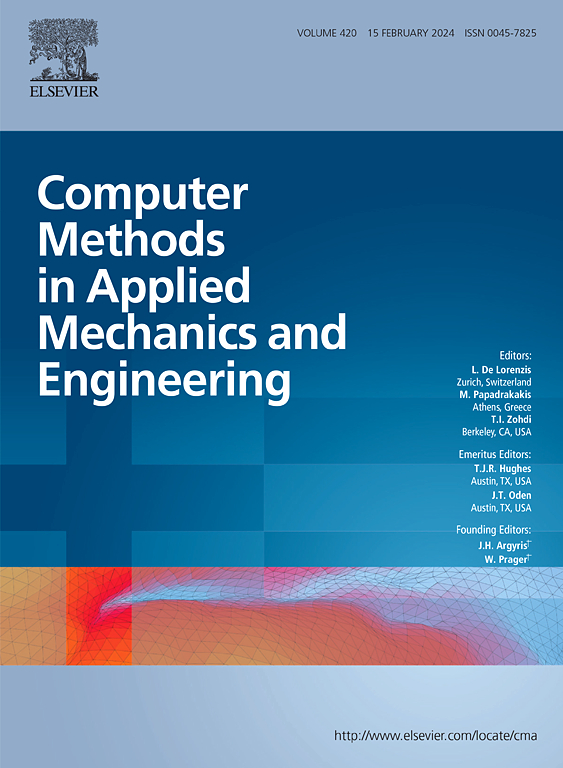Improved Greedy Identification of latent dynamics with application to fluid flows
IF 6.9
1区 工程技术
Q1 ENGINEERING, MULTIDISCIPLINARY
Computer Methods in Applied Mechanics and Engineering
Pub Date : 2025-02-05
DOI:10.1016/j.cma.2025.117799
引用次数: 0
Abstract
Model reduction is a key technology for large-scale physical systems in science and engineering, as it brings behavior expressed in many degrees of freedom to a more manageable size that subsequently allows control, optimization, and analysis with multi-query algorithms. We introduce an enhanced regression technique tailored to uncover quadratic parametric reduced-order dynamical systems from data. Our method, termed Improved Greedy Identification of Latent Dynamics (I-GILD), refines the learning phase of the original GILD approach proposed in Oulghelou et al. (2024). This refinement is achieved by reorganizing the quadratic model coefficients, allowing the minimum-residual problem to be reformulated using the Frobenius norm. Consequently, the optimality conditions lead to a generalized Sylvester equation, which is efficiently solved using the conjugate gradient method. Analysis of the convergence shows that I-GILD achieves superior convergence for quadratic model coefficients compared to GILD’s steepest gradient descent, reducing both computational complexity and iteration count. Additionally, we derive an error bound for the model predictions, offering insights into error growth in time and ensuring controlled accuracy as long as the magnitudes of initial error is small and learning residuals are well minimized. The efficacy of I-GILD is demonstrated through its application to numerical and experimental tests, specifically the flow past Ahmed body with a variable rear slant angle, and the lid-driven cylindrical cavity problem with variable Reynolds numbers, utilizing particle-image velocimetry (PIV) data. These tests confirm I-GILD’s ability to treat real-world dynamical system challenges and produce effective reduced-order models.
求助全文
约1分钟内获得全文
求助全文
来源期刊
CiteScore
12.70
自引率
15.30%
发文量
719
审稿时长
44 days
期刊介绍:
Computer Methods in Applied Mechanics and Engineering stands as a cornerstone in the realm of computational science and engineering. With a history spanning over five decades, the journal has been a key platform for disseminating papers on advanced mathematical modeling and numerical solutions. Interdisciplinary in nature, these contributions encompass mechanics, mathematics, computer science, and various scientific disciplines. The journal welcomes a broad range of computational methods addressing the simulation, analysis, and design of complex physical problems, making it a vital resource for researchers in the field.

 求助内容:
求助内容: 应助结果提醒方式:
应助结果提醒方式:


